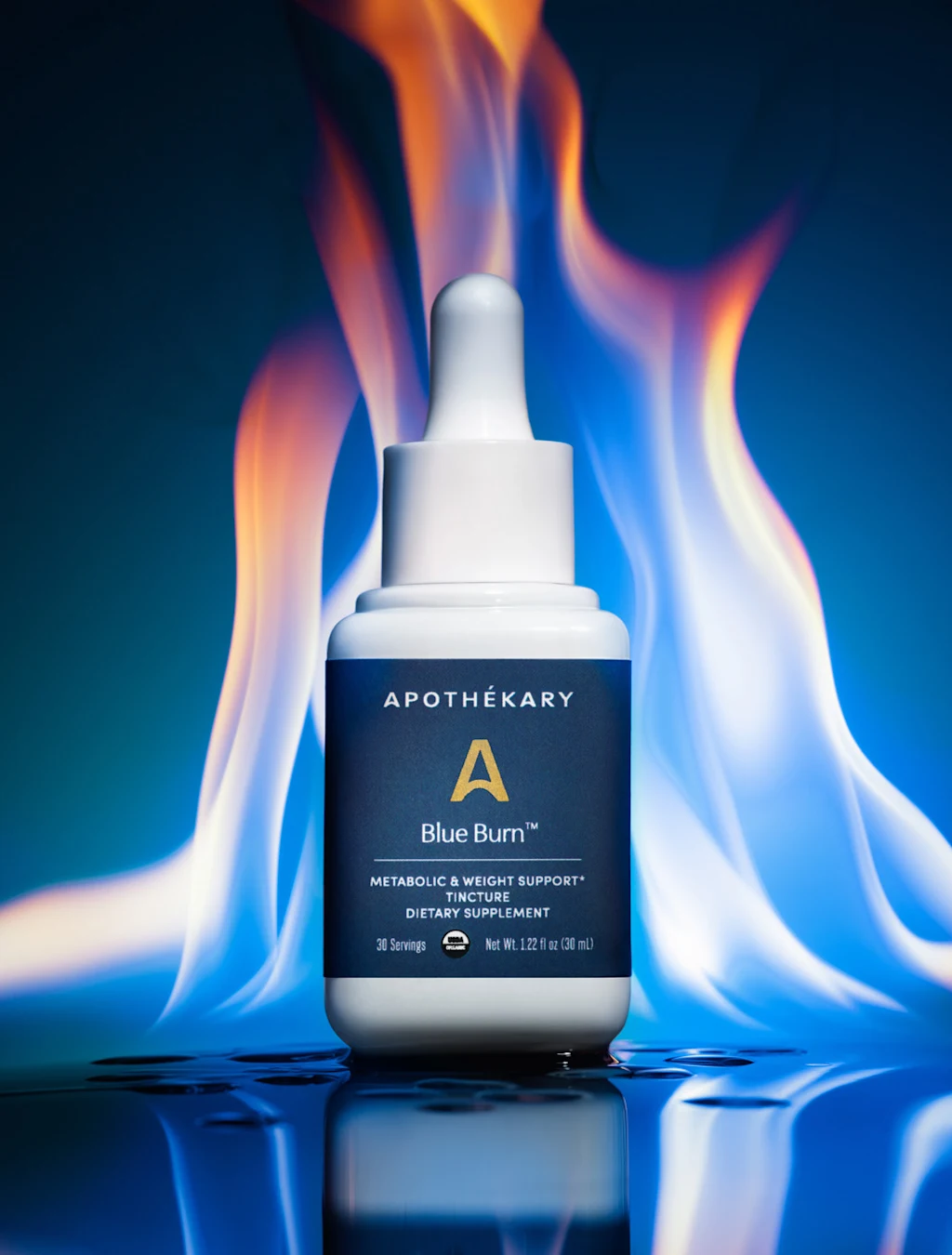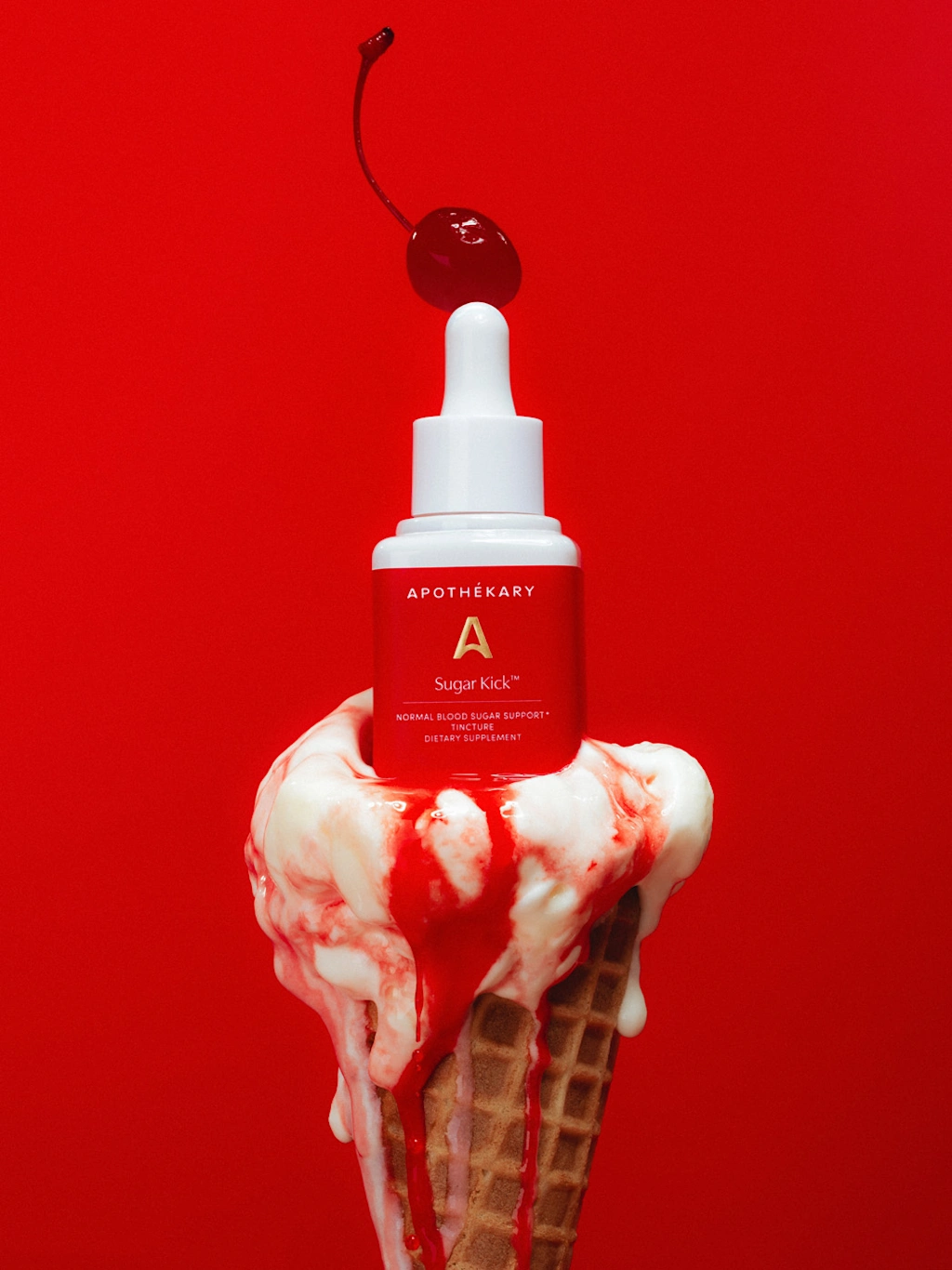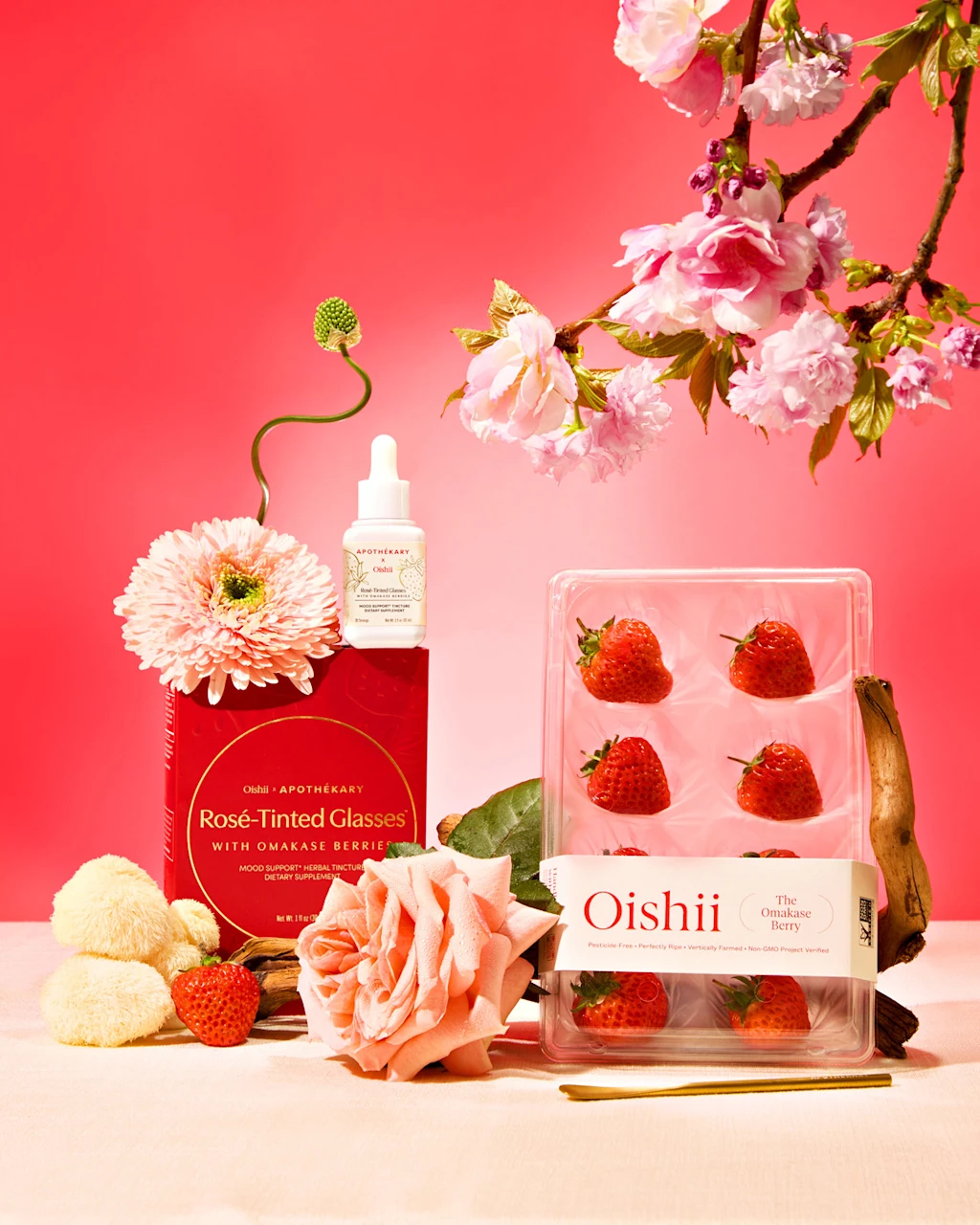
Some seven million Americans are now on GLP-1 weight loss drugs, a figure expected to rise to 24 million by 2035. These medications curb users’ appetites for fatty, ultra-processed foods, and grocery stores are noticing: total sold units of doughnuts, cakes, and cookies are down by 10%, 19%, and 13%, respectively, compared to five years ago. With this drop in revenue from junk food, grocery stores need to think about how to make more money from other categories. For Whole Foods, there’s one aisle that brims with potential: supplements.
Today, Whole Foods is introducing a new line of Japanese-inspired supplements called Apothékary onto its aisles. The brand is known for its distinct form factor factor: While many supplements are sold as gummies, capsules, or powders, Apothékary sells tinctures, which can be dropped under the tongue, or incorporated into drinks.
Apothékary is part of the booming supplements industry, currently valued at $192 billion, and projected to grow to $415 by 2033. The brand has been growing rapidly thanks to its recent expansion into all 350 of Ulta Beauty stores and 400 Sprouts grocery stores. But the move into Whole Foods is its biggest one yet, and offers insight into how consumers are spending their grocery dollars as their food spending goes down.

Modernizing tradition
Shizu Okusa launched Apothékary in 2020. She had previously founded a cold-pressed juice brand called Jrink, which had 14 retail locations and was sold at Whole Foods. In 2019, Okusa sold Jrink to Puree Juice Bar, and began plotting out her next business. This time, she wanted to launch a company that was more deeply connected to her own roots.
Okusa’s father grew up in Japan. After dropping out of high school, he decided to take a boat to Canada, where he got a job as a laborer on a dairy farm. Eventually, he decided to start his own farm, one where he could use traditional Japanese techniques, such as space-saving vertical farming. As Okusa grew up in this farming community, she learned about the Japanese approach to health and medicine, which is intimately connected with the land, herbs, and plants.
“In Japanese culture, we often talk about nature as medicine,” she says. “I didn’t grow up with a lot of pills. Instead, my family relied on plant-based remedies.”
In Japan, there is a herbal medicine tradition called Kampo. It goes back to the Sixth century, when the Empress of Japan sent a group of doctors to China to learn about the medical practices that had evolved there. These doctors brought back the tenets of traditional Chinese medicine to their homeland, then localized them to the ingredients that are abundant in Japan, like seaweed.
Today, Kampo continues to be practiced in Japan. Doctors and researchers are now modernizing Kampo practices and performing clinical studies on formulations. There are also hospitals in Japan, such as Tohoku University Hospital and Okayama University Hospital, which integrate both traditional and Western medicine into their treatments. (This is similar to what is happening in China, with traditional Chinese medicine.)
Okusa believed that there was an opportunity to bring traditional Kampo formulations to the Western market, particularly as many Americans are embracing other Japanese wellness practices. And she relies on ingredients that are backed by peer-reviewed studies. “There is growing awareness about meditation and even the matcha tea ceremony, which are both Japanese,” she points out.

The Evolving Supplement Landscape
Okusa launched Apothékary with a collection of herbal formulas designed to improve sleep, digestion, and energy. Apothékary’s original formulas came in powders, but Okusa realized that to stand out in the market, she needed to innovate. She had the idea of changing their form factor to tinctures, so she began to make liquid supplements that could be taken under the tongue or in beverages.
“The tincture form has been around for a long time, particularly in Eastern medicine traditions, but it wasn’t very common in the U.S.,” she says. “It added novelty and also convenience, because you can just put it directly into your mouth.”
This new format was key to driving the brand’s growth. During the pandemic, many people realized they were drinking too much and wanted to curb their alcohol consumption. Apothékary launched a collection of alcohol alternatives, like Wine Down, Take The Edge Off, and Rose-Tinted Glasses, which were tinctures that could be consumed in a mocktail. As little jars of liquid, they looked much more like spirits and they were designed to provide many of the benefits people are looking for in an alcoholic cocktail, like relaxation and better sleep.
Apothékary’s unusual approach to delivering the supplement was partly what made Whole Foods bring the brand into its stores. “Whether you take [the tincture] directly or mixed into mocktails, it provides an engaging format,” says Abbey Appel, a Whole Foods merchant who specializes in functional foods and supplements.

As the pandemic was waning, the next big trend was the rise in GLP-1 drugs, which the FDA approved for weight loss. As adoption of these drugs spiked, people began consuming less junk food and alcohol. Okusa saw a spike in Apothékary’s sales, as people seemed to turn to these tinctures, which are tasty despite being calorie- and sugar-free.
“We could not have predicted how GLP-1s would change people’s consumption patterns, but our brand has benefited from this new reality,” she says. “We’re creating an alternative for people who have stopped buying as many chips and cookies, and are more focused on their health.”
As GLP-1s increase in popularity and Americans continue to seek out products that promote wellness, grocery stores are introducing new brands into their mix. Whole Foods has been actively seeking out interesting new supplements to bring into their aisles. Appel says that the brand’s non-Western approach to wellness was intriguing. “The founder’s genuine connection to Japanese heritage resonates with our customers,” says Appel.
While demand for wellness products continues to grow, the market is also getting more crowded, as new brands pop up. Okusa believes that the key to the brand’s success so far has been it’s ability to be agile and innovative. “Consumer behavior is constantly evolving,” she says. “It’s important to keep evolving too.”

